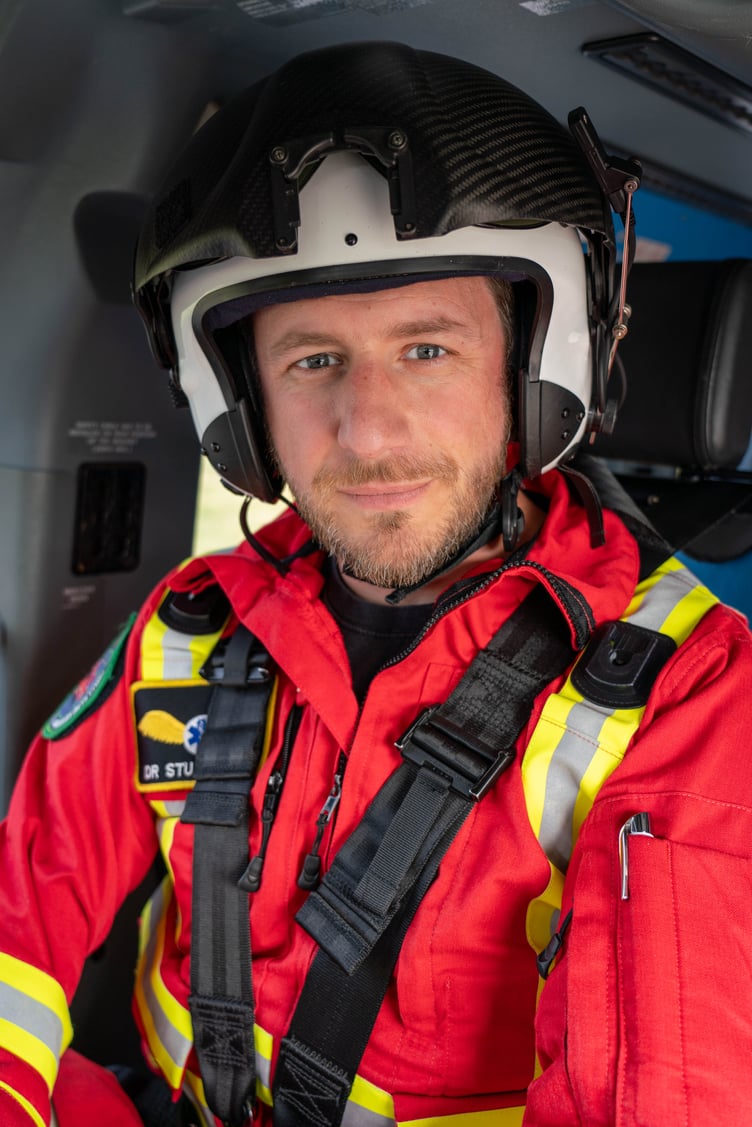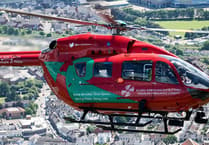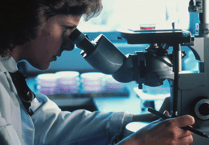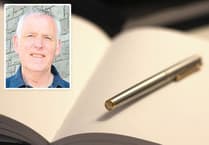One of the hardest things as a doctor is knowing there are people in a life-threatening situation we’re not available to help.
The impact on the person involved and their loved ones can be devastating.
Evidence shows that the hospital-standard care delivered by Wales Air Ambulance at the scene of an emergency significantly improves a patient’s chances of survival and recovery.
Sadly, not everybody benefits from this.
We’re consistently missing large numbers of seriously ill or injured people.
Of particular concern is the period after 8pm in Mid and North Wales. After this time, we only have one medical team covering the whole of Wales, based in Cardiff.
Across 2023 and 2024, 551 emergencies in Mid and North Wales, between 8pm and 2am, didn’t get an air ambulance response.
There were 632 emergencies suitable for an air ambulance in Mid and North Wales during this time. We attended 81. In the same period in South Wales, we attended 983.
These missed emergencies are disturbing enough. But there’s more.
In 2023 and 2024, there were 362 days, nearly a YEAR, between Caernarfon and Welshpool when we saw no patients.
So, what’s going wrong?
That question was answered as part of an extensive expert review of our service, supported by those of us who work on board the air ambulance.
What did it tell us?
In short, our Welshpool and Caernarfon crews are in the wrong places and we’re not operating at the right times.
Since 2015, we’ve used rapid response vehicles as well as helicopters. One reason for the underuse in Welshpool and Caernarfon is that their remote locations make it difficult for us to use the cars, particularly in areas where our preference would be to attend by road – urban areas of North East Wales, for example.
We need somewhere that gives us the best chance of attending emergencies by air and by road. About 2,000 individual locations were analysed to find the best geographical area – one that would help us attend more patients across the whole of Mid and North Wales.
The optimum location is a more central position in North Wales, near the A55.
The analysis also reveals that the demand for our service in Mid and North Wales is greater in the afternoon and evening than in the morning.
So, the new base location will have two crews in operation. One will work 8am to 8pm. The other 2pm until 2am.
Rumours are circulating that a helicopter will be taken away. That’s not true. We’ll continue to have four helicopters.
Working in Mid Wales, I understand the genuine fears of our communities. Losing services is a constant source of anguish.
I can wholeheartedly reassure you – you’re not losing a service. This is an improvement, giving our communities even more protection.
The questions being asked are understandable. The answers lie in the way an air ambulance operates.
The most frequent question is about response times.
Firstly, we’re not a primary responder. That’s the role of Community First Responders and the Welsh Ambulance Service. We’re a secondary responder, the next link in the chain when hospital-standard treatment is required on top of the vital care already given. Less than 1% of all 999 calls need our specialist service.
There’s also a misconception that each base provides a localised service. We see this through comments suggesting ‘it’ll take you longer to get to us if you move’. This assumes we’re coming from a particular base. Wales Air Ambulance is not a regional service. We’re a scarce resource. Regardless of where we’re based, we go wherever we’re needed in Wales. Sometimes, we’ll travel from one incident straight to another. Our response times will always vary depending on where we’re coming from.
That takes us to the next point. We’re not simply ‘a road ambulance in the sky’. We’re a ‘mobile emergency department’. We can put a patient to sleep, protecting their vital organs. We can deliver blood transfusions and even conduct minor operations.
By delivering hospital-standard care on scene, we can save hours, even days, in the patient journey. So, when people talk about ‘minutes longer’ to an incident, please remember the significant time savings we already bring, which far outweigh anything else.
Other questions include the following.
Why don’t you operate after 8pm from Caernarfon or Welshpool? As mentioned, the challenging locations mean that we can’t deliver the most effective service by road.
Why don’t you leave Caernarfon and Welshpool where they are and put a rapid response vehicle near Wrexham? This would increase the underuse of Caernarfon and Welshpool and see more of your generous donations being wasted on the ground, doing nothing. The way to solve inefficiency isn’t to add more resources, it’s to improve the efficiency of the resources that we already have.
You’re not going to reach rural areas by road? There’s already a limited chance of a road response from Caernarfon and Welshpool. For example, in 2024, we attended 25 emergencies in the LL53 postcode (covering part of the Llyn Peninsula). Only one was by road. That’s the same for most rural parts of Mid and North Wales. Cars will always be preferable in urban areas and helicopters in rural areas. Right now, our helicopters are dragged into urban areas, where a road response may be better. The service improvement means our cars will be used more in urban areas, freeing up the helicopters for rural areas.
People have also asked about a proposed road-based service put forward by the previous Chief Ambulance Services Commissioner. There’s confusion about this and its connection to the air ambulance. It’s sometimes mistakenly referred to as mitigation for moving airbases. To be clear, this is a proposal based on concerns about the wider ambulance service. It’s not a replacement for the air ambulance and would be run solely by NHS Wales – something recognised by the Judge in the recent Judicial Review on the NHS decision-making process.
Missed emergencies aren’t just numbers on a page. We see it in real time, affecting real people.
Wales has the largest and one of the most advanced air ambulance services in the UK. That’s only possible thanks to all the people who support us.
We’re incredibly proud of the service we provide. It’s heartbreaking for us to hear that some people want to withdraw support for the Charity because of a mistaken belief that we’re abandoning them. The ability to deliver our lifesaving service will always be based on the volume of support the Charity gets.
We can, and will, do better for you.





Comments
This article has no comments yet. Be the first to leave a comment.